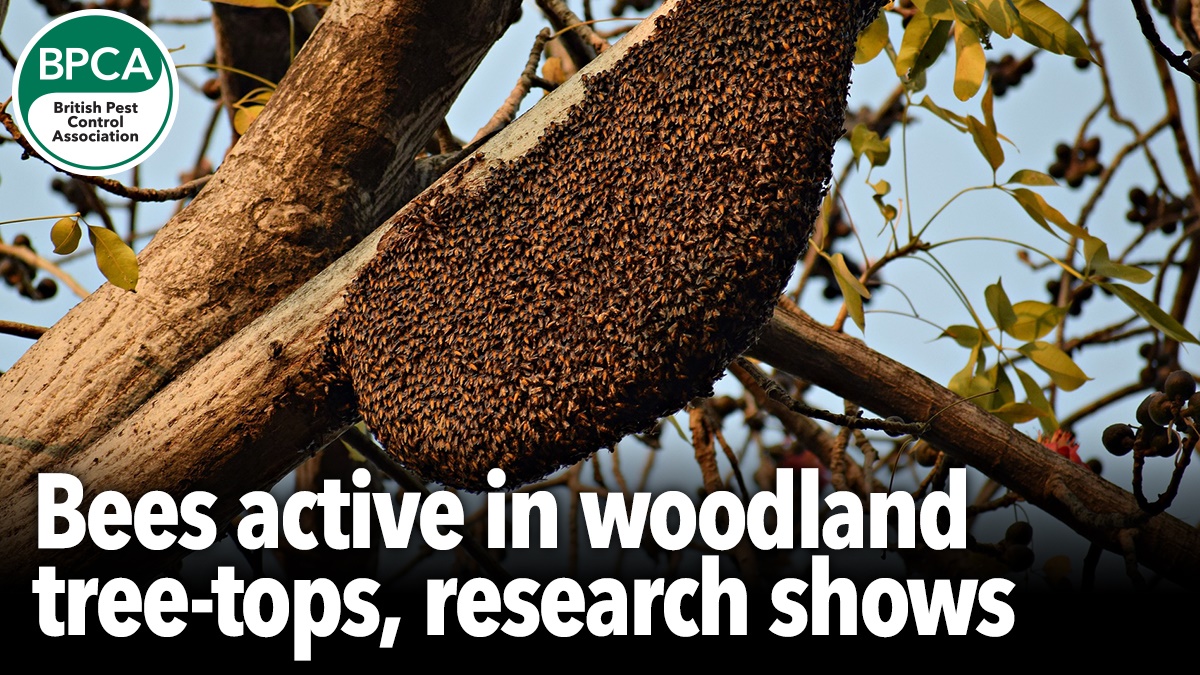RESEARCH
Wild bees may be just as happy visiting the high canopy of woodlands as they are among the flowers at ground level, according to new research from the University of East Anglia.

The shaded interiors of woodlands are generally considered a poor habitat for sun-loving bees.
But a new study published today reveals that a diverse community of wild bees are active high up above the shade - among the trees’ branches and foliage in the sunlit woodland canopy.
The team say that woodland canopies may play a more significant role in bee conservation than previously thought, with nectar and pollen-rich Sycamore trees proving particularly attractive to bees.
Dr Richard Davies, from UEA’s School of Biological Sciences, said: “Wild bees are a major contributor to crop pollination services, but to thrive in agricultural landscapes they also need non-crop habitats to provide places to nest and flowers to feed on.
“Shaded woodland interiors are often considered poor foraging habitat for bees, but until now, bee activity in the sunlit woodland canopy has scarcely been investigated.”
Lead researcher Guthrie Allen, also from UEA’s School of Biological Sciences, said: “We wanted to find out more about the potential for the woodland canopy to support wild bee communities.”
The team investigated bee communities across 15 woodland sites in a farmed landscape in Norfolk in late spring.
Shaded woodland interiors are often considered poor foraging habitat for bees, but until now, bee activity in the sunlit woodland canopy has scarcely been investigated.
Dr Richard Davies, University of East Anglia
They examined levels of bee activity in four habitats - in the canopy (at heights of up to 20 metres) and understory of both woodland interiors and exposed woodland edges.
Allen said: “We found that a diverse community of wild bees are active in the woodland canopy – by which we mean high up among the trees’ branches and foliage.
“Activity levels were particularly high near flowering Sycamore trees.
“We also found that bee communities differ between the woodland canopy and understory – the layer of vegetation growing close to the woodland floor.
“And we were surprised to find that most bee species were just as abundant in the understories of woodland interiors as they were at the sun-exposed edges bordering farmland.
“Our findings show that wild bees have the potential to exploit the plentiful sources of nectar and pollen available in woodland canopies."
Further investigation is needed to understand why communities differ between the canopy and understory, but overall, our work suggests that woodlands play a more significant role in supporting farmland bee communities than previously thought.
Guthrie Allen, University of East Anglia
Allen continued, “Nectar producing trees, such as Sycamore, are likely to represent a significant food source for many bee species, while some may even collect pollen from wind-pollinated trees, such as Oak.
“Our findings also show the potential for the understory of managed woodlands to support bee communities.
“Further investigation is needed to understand why communities differ between the canopy and understory, but overall, our work suggests that woodlands play a more significant role in supporting farmland bee communities than previously thought.”
‘Canopy sampling reveals hidden potential value of woodland trees for wild bee assemblages’ is published in the journal Insect Conservation and Diversity on October 13, 2022.

Source: Online